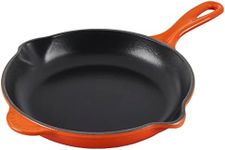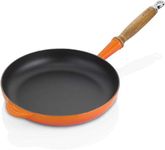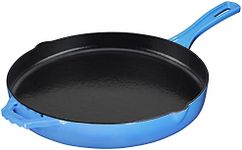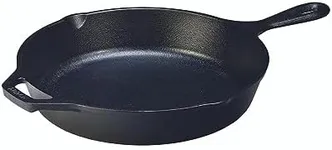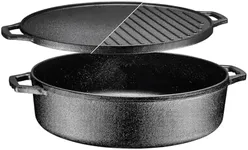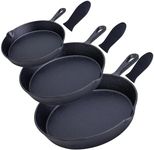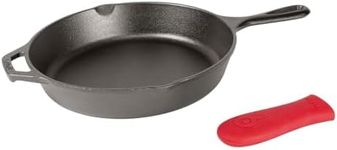Buying Guide for the Best Cast Iron Fry Pans
Choosing the right cast-iron fry pan can make a big difference in your cooking experience. Cast-iron pans are known for their durability, heat retention, and versatility, but not all pans are the same. When shopping for a cast-iron fry pan, it's important to consider a few key features that will affect how you use the pan and how well it fits your cooking style. Understanding these features will help you pick a pan that you'll enjoy using for years to come.Size (Diameter)The size of a cast-iron fry pan is usually measured by its diameter across the top. This is important because it determines how much food you can cook at once. Smaller pans, around 8 inches, are great for single servings or small meals, while medium pans, about 10 inches, are versatile for most households. Larger pans, 12 inches or more, are ideal for families or when cooking bigger meals. Think about how many people you usually cook for and what types of dishes you like to make. If you often cook for one or two, a smaller pan may be enough, but for family meals or entertaining, a larger pan is more practical.
WeightCast-iron pans are known for being heavy, but the weight can vary. Heavier pans retain heat better and cook more evenly, but they can be harder to handle, especially when full of food. Lighter pans are easier to lift and move, but may not hold heat as well. If you have wrist or arm strength concerns, or if you plan to move the pan often (for example, from stove to oven), you might prefer a lighter pan. If you want the best heat retention and don't mind the extra weight, a heavier pan could be a better choice.
Handle DesignThe handle of a cast-iron fry pan affects how comfortable and safe it is to use. Some pans have long handles, which stay cooler and are easier to grip, while others have shorter handles or an extra helper handle on the opposite side for two-handed lifting. If you plan to move the pan when it's hot or full, look for a pan with a comfortable, easy-to-grip handle and possibly a helper handle. If you mostly leave the pan in one place, handle design may be less important.
Pre-seasoned vs. UnseasonedCast-iron pans need a layer of seasoning (baked-on oil) to prevent rust and create a nonstick surface. Some pans come pre-seasoned, meaning they're ready to use right away, while others are unseasoned and require you to season them before first use. Pre-seasoned pans are more convenient for beginners or those who want to start cooking immediately. If you enjoy customizing your cookware or want to control the seasoning process, an unseasoned pan might be appealing. Consider your comfort level with seasoning and maintenance when making your choice.
Cooking Surface SmoothnessThe smoothness of the cooking surface can affect how food cooks and how easy the pan is to clean. Some cast-iron pans have a rougher texture, which can help seasoning build up over time, while others are polished smooth for a more nonstick feel from the start. If you want a pan that releases food easily and is simple to clean, look for a smoother surface. If you don't mind a bit of texture and are willing to build up seasoning over time, a rougher surface can work well too.
Depth and Sidewall ShapeThe depth and shape of the pan's sides influence what you can cook. Shallow pans with sloped sides are great for frying and flipping foods like eggs or pancakes, while deeper pans with straight sides are better for dishes with sauces or for braising. Think about the types of meals you like to prepare. If you mostly fry or sauté, a shallower pan is ideal. If you want to use your pan for stews or deep-frying, a deeper pan will be more versatile.




